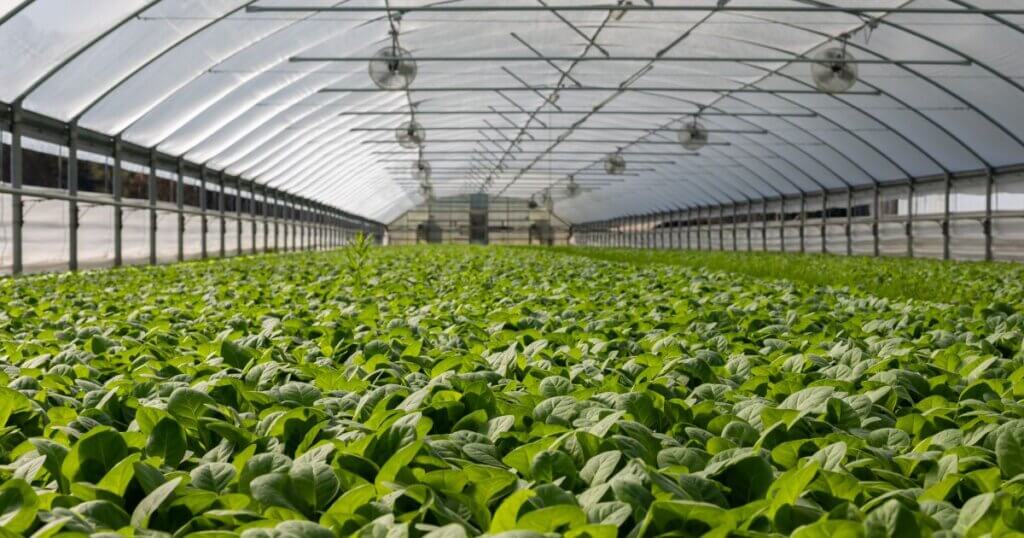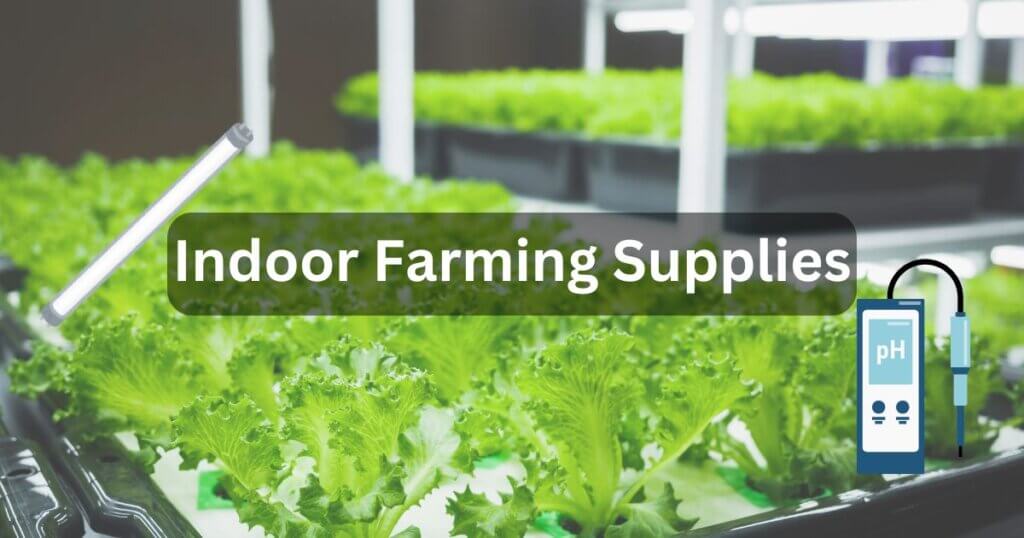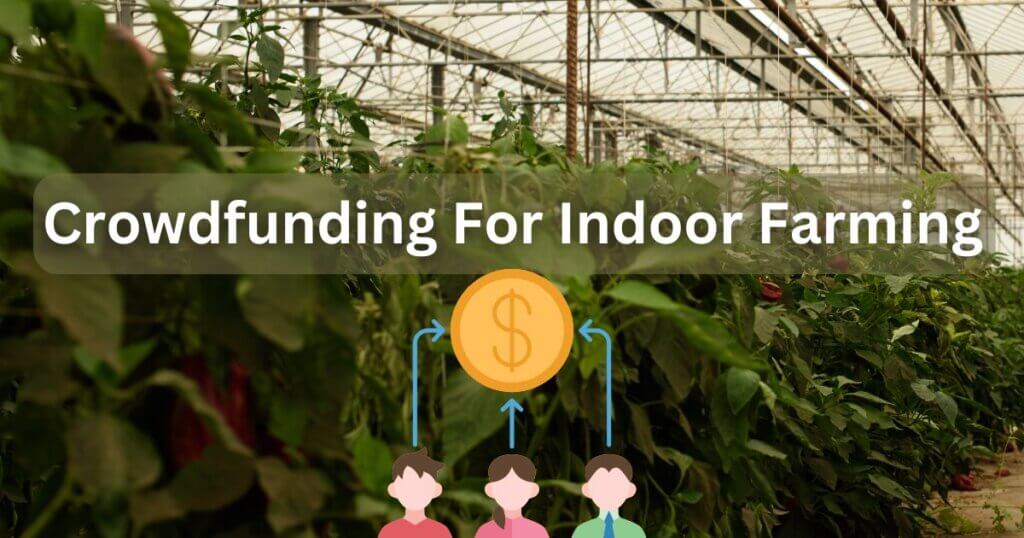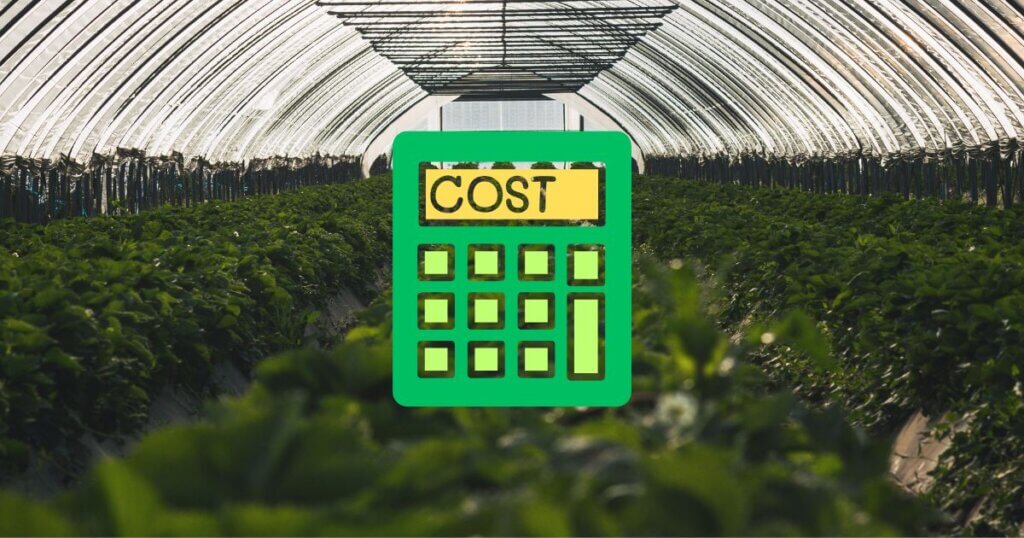Ultimate Embracing Sustainability: Organic Indoor Farming

Some of the links in this post are affiliate links. As an Amazon Associate, we earn a referral fee from qualifying purchases—at no extra cost to you.
In a world facing increasing environmental challenges, indoor organic farming has emerged as a groundbreaking solution to revolutionize agriculture. This innovative approach combines advanced technology and sustainable practices to cultivate crops within controlled environments. By harnessing the power of organic indoor farming, we can ensure a greener and more sustainable future for our planet. In this article, we will explore the concept of organic indoor farming, its benefits, techniques, and its positive impact on our environment and food production systems.
Table of Contents
The Rise of Organic Indoor Farming
Understanding Organic Indoor Farming
Organic indoor farming (controlled environment agriculture (CEA)) involves growing crops within enclosed structures such as greenhouses or vertical farms. Unlike traditional agriculture, which relies on external weather conditions and natural soil, organic indoor farming allows for precise control over environmental factors like temperature, humidity, light, and nutrient levels. This controlled environment enables farmers to optimize plant growth, productivity, and resource utilization.
The Benefits of Organic Indoor Farming
Organic indoor farming offers a multitude of benefits that contribute to a more sustainable and efficient agricultural system:
1. Efficient Resource Utilization
One of the key advantages of indoor organic farming is its efficient use of resources. By controlling factors such as water, light, and nutrients, farmers can minimize waste and maximize resource utilization. Precise irrigation systems, nutrient delivery mechanisms, and energy-efficient lighting technologies ensure that plants receive optimal resources, reducing water consumption and energy waste.
2. Year-Round Crop Production
Unlike traditional farming methods heavily reliant on seasonal changes, indoor organic farming allows for year-round crop production. By creating artificial climates within enclosed structures, farmers can eliminate the constraints of weather patterns and extend growing seasons. This continuous crop production ensures a consistent and reliable food supply, reducing the need for long-distance transportation and minimizing food waste.
3. Reduced Dependency on Pesticides
Organic indoor farming significantly reduces the reliance on chemical pesticides and herbicides. The controlled environment is a natural barrier against pests, diseases, and invasive species, minimizing crop damage and contamination. Integrated pest management techniques, such as beneficial insect release and biological controls, further enhance pest control without the need for harmful chemicals.
4. Water Conservation
Water scarcity is a pressing global issue, and indoor organic farming offers a sustainable solution. Through innovative irrigation systems like hydroponics or aeroponics, farmers can significantly reduce water consumption compared to traditional farming methods. These systems recirculate water, minimizing waste and maximizing efficiency. Additionally, the controlled environment minimizes water loss through evaporation, conserving this precious resource.
5. Enhanced Crop Quality and Nutritional Value
The controlled environment of indoor organic farming allows farmers to optimize crop growth conditions. Farmers can produce high-quality crops with enhanced flavor, texture, and nutritional value by fine-tuning factors such as light intensity, temperature, and nutrient composition. This precision ensures consistent crop quality and meets the increasing demand for nutritious, locally-grown produce.
Techniques of Organic Indoor Farming
1. Hydroponics: Cultivating Without Soil
Hydroponics is a widely used technique in indoor organic farming. It involves growing plants without soil and providing a nutrient-rich water solution. The plant’s roots are either submerged in the nutrient solution, supported by an inert medium, or exposed to a fine mist of nutrient solution. Hydroponics allows for efficient nutrient absorption, faster growth rates, and higher yields than traditional soil-based farming.
The AeroGarden Harvest Elite Slim is an excellent entry-level hydroponic system that allows users to grow herbs and small vegetables indoors without soil. Its sleek design and user-friendly interface make it ideal for beginners exploring hydroponic cultivation.
2. Aquaponics: The Symbiotic System
Aquaponics combines hydroponics with aquaculture, creating a symbiotic system where fish and plants coexist. In this closed-loop system, fish waste provides nutrients for the plants while the plants filter and purify the water for the fish. This mutually beneficial relationship creates a self-sustaining ecosystem that requires minimal external inputs. Aquaponics offers plant and fish cultivation advantages, providing a diversified and sustainable food production system.
The AquaSprouts Garden Kit transforms a standard aquarium into a self-sustaining aquaponic ecosystem. It’s perfect for illustrating the symbiotic relationship between fish and plants, as discussed in your article
3. Aeroponics: Cultivating in Air
Aeroponics is an advanced technique that involves growing plants in an air or mist environment without soil or water. The plant’s roots are suspended in the air, and nutrient-rich mist is periodically sprayed onto them. This method promotes rapid plant growth, reduces water consumption compared to hydroponics, and allows for better absorption of nutrients. Aeroponics is particularly suitable for growing delicate and high-value crops.
Aeroponic Starter Kit allows plants to grow in air with nutrient-rich mist, aligning with the advanced techniques highlighted in your article. It’s suitable for readers interested in high-efficiency, soilless cultivation methods.
4. Vertical Farming: Maximizing Space Utilization
Vertical farming is a space-efficient technique used in organic indoor farming. It involves growing crops in vertically stacked layers or towers, utilizing limited floor space effectively. Vertical farms often incorporate hydroponics or aeroponics systems, allowing for high-density cultivation. This method is especially valuable in urban areas with limited land availability, providing opportunities for local food production and reducing the environmental impact of long-distance transportation.
This vertical growing system exemplifies space-efficient farming, enabling users to cultivate multiple plants in a compact footprint. It directly supports the vertical farming concepts you’ve explored.
The Environmental Impact of Organic Indoor Farming
Organic indoor farming offers several environmental benefits that contribute to sustainable agriculture:
1. Reduced Land Use
By utilizing vertical space and optimizing land usage, indoor organic farming reduces the need for vast expanses of farmland. This, in turn, helps protect natural habitats, preserves biodiversity, and minimizes deforestation caused by land clearing for agriculture. The compact nature of organic indoor farms enables food production closer to urban areas, reducing the environmental impact of transportation and supporting local food systems.
2. Mitigation of Climate Change
Organic indoor farming has the potential to mitigate the impact of climate change. By minimizing reliance on fossil fuel-based machinery, reducing greenhouse gas emissions associated with long-distance transportation, and employing energy-efficient technologies, organic indoor farming helps decrease carbon footprints in the agricultural sector. Furthermore, the controlled environment enables optimal energy management, allowing for the integration of renewable energy sources such as solar or wind power.
3. Conservation of Water Resources
Water scarcity is a global concern, and organic indoor farming addresses this issue by significantly reducing water consumption. The controlled environments of hydroponics, aeroponics, and other indoor farming techniques enable precise water delivery, minimizing evaporation and runoff. Furthermore, implementing water recycling systems ensures the efficient use of this vital resource, reducing the strain on freshwater supplies.
4. Preservation of Soil Health
Conventional farming practices often contribute to soil degradation through erosion, chemical pollution, and nutrient depletion. Organic indoor farming, on the other hand, eliminates soil erosion risks and the need for chemical fertilizers. By adopting soilless cultivation methods such as hydroponics or aeroponics, organic indoor farming removes the reliance on natural soil and promotes sustainable nutrient management. This ensures the long-term preservation of soil health and fertility.
The Future of Organic Indoor Farming
Organic indoor farming holds immense potential to transform the agricultural landscape and shape the future of food production. As society becomes more conscious of environmental issues and demands sustainable solutions, indoor organic farming is gaining traction worldwide. Advancements in technology, such as LED lighting, climate control systems, and automation, are driving the efficiency and scalability of organic indoor farms. Integrating data analytics and artificial intelligence further enhances crop management, resource allocation, and productivity.
Conclusion
Organic indoor farming represents a significant shift towards sustainable and efficient food production systems. By embracing this innovative approach, we can address the environmental challenges associated with traditional agriculture, such as resource depletion, water scarcity, and climate change.
Organic indoor farming offers numerous benefits, including efficient resource utilization, year-round crop production, reduced pesticide dependency, water conservation, and enhanced crop quality. Hydroponics, aquaponics, aeroponics, and vertical farming enable precise control over growing conditions, maximizing productivity and minimizing environmental impact.
The environmental impact of organic indoor farming is substantial, with reduced land use, mitigation of climate change, conservation of water resources, and preservation of soil health. We can create a more resilient and environmentally conscious agricultural system by adopting these sustainable practices.
As we look to the future, organic indoor farming holds great promise in addressing the challenges of a growing population, food security, and sustainability. With continued technological advancements, increased awareness, and support for sustainable practices, organic indoor farming will be crucial in shaping a greener and healthier world.
FAQs – Organic Indoor Farming
1. How does organic indoor farming compare to traditional organic farming?
While both methods focus on sustainability and avoiding synthetic chemicals, organic indoor farming allows for year-round crop production, better resource efficiency, and protection from external environmental factors. Traditional organic farming, however, relies on natural soil ecosystems and requires more land.
2. Is organic indoor farming cost-effective for small-scale farmers?
The initial investment for indoor farming can be high due to the need for controlled environment systems, but long-term savings in water, pesticides, and land use can make it a viable option. Many small-scale farmers offset costs through hydroponic or vertical farming setups that maximize yield in limited space.
3. What types of crops are best suited for organic indoor farming?
Leafy greens (such as lettuce, kale, and spinach), herbs (like basil and mint), and microgreens thrive in indoor environments. With the right light and nutrient balance, some fruiting crops, like strawberries and cherry tomatoes, can also be successfully cultivated.
4. Can organic indoor farming completely replace traditional agriculture?
While indoor farming is a sustainable alternative, it is unlikely to fully replace traditional agriculture, especially for staple crops like wheat, corn, and rice. However, it complements traditional methods by increasing local food production and reducing reliance on long-distance supply chains.
5. What are the biggest challenges facing organic indoor farming today?
High energy consumption, initial infrastructure costs, and the need for skilled labor are some of the major challenges. Additionally, maintaining organic certification in a controlled environment can be complex due to strict regulations regarding nutrient sources and pest control methods.
Other Useful Resources Related To Organic Indoor Farming
- Building-Integrated Agriculture
This Wikipedia article explores the integration of high-performance hydroponic greenhouse farming systems into mixed-use buildings, highlighting the environmental advantages and economic considerations of such practices. - The Environmental Benefits of Going Organic: A Deep Dive for Earth Day
This article discusses how choosing organic products can positively impact the environment, emphasizing the sustainable practices inherent in organic agriculture. - Is Organic Farming an Environmental Health Solution?
This resource examines the environmental and health implications of organic farming, providing a balanced perspective on its benefits and challenges. - 7 Benefits of Organic Farming on the Environment
This article outlines the environmental advantages of organic farming, including reduced erosion and improved biodiversity, offering a comprehensive overview of its positive impacts. - Organic Farming Provides Reliable Environmental Benefits but Increases Variability in Crop Yields: A Global Meta-Analysis
This scientific study analyzes the environmental benefits of organic farming and discusses the variability in crop yields, contributing to a deeper understanding of its sustainability.







